-
 Rare Beauty Positive Light Liquid Luminizer Exhilarate 0.09 oz
×
$28.902 × $14.45
Rare Beauty Positive Light Liquid Luminizer Exhilarate 0.09 oz
×
$28.902 × $14.45 -
 Matrix Biolage Smoothproof Serum 3 oz
×
$22.081 × $22.08
Matrix Biolage Smoothproof Serum 3 oz
×
$22.081 × $22.08 -
 Aveda Be Curly Curl Enhancer 6.7 oz
×
$27.861 × $27.86
Aveda Be Curly Curl Enhancer 6.7 oz
×
$27.861 × $27.86 -
 TIZO 3 Facial Mineral Sunscreen Tinted SPF 40 1.75 oz
×
$24.001 × $24.00
TIZO 3 Facial Mineral Sunscreen Tinted SPF 40 1.75 oz
×
$24.001 × $24.00 -
 Vanicream Moisturizing Skin Cream 16 oz 2 Pack
×
$19.991 × $19.99
Vanicream Moisturizing Skin Cream 16 oz 2 Pack
×
$19.991 × $19.99 -
 Epionce Renewal Facial Lotion 1.7 oz
×
$58.141 × $58.14
Epionce Renewal Facial Lotion 1.7 oz
×
$58.141 × $58.14 -
 UNITE Hair U Argan Oil 4 oz
×
$29.071 × $29.07
UNITE Hair U Argan Oil 4 oz
×
$29.071 × $29.07 -
 Matrix Biolage Gelee Styler 16.9 oz
×
$20.461 × $20.46
Matrix Biolage Gelee Styler 16.9 oz
×
$20.461 × $20.46 -
 18.21 Man Made Carry On 4-in-1 Travel Foam Spiced Vanilla 3.4 oz
×
$9.991 × $9.99
18.21 Man Made Carry On 4-in-1 Travel Foam Spiced Vanilla 3.4 oz
×
$9.991 × $9.99 -
 18.21 Man Made Carry On 4-in-1 Travel Foam Sweet Tobacco 3.4 oz
×
$9.991 × $9.99
18.21 Man Made Carry On 4-in-1 Travel Foam Sweet Tobacco 3.4 oz
×
$9.991 × $9.99 -
 ABBA Color Protection Conditioner 8 oz
×
$7.991 × $7.99
ABBA Color Protection Conditioner 8 oz
×
$7.991 × $7.99 -
 ABBA Color Protection Shampoo 8 oz & Color Protection Conditioner 8 oz Combo Pack
×
$14.991 × $14.99
ABBA Color Protection Shampoo 8 oz & Color Protection Conditioner 8 oz Combo Pack
×
$14.991 × $14.99 -
 ABBA Moisture Shampoo 8 oz
×
$7.991 × $7.99
ABBA Moisture Shampoo 8 oz
×
$7.991 × $7.99 -
 ABBA Moisture Shampoo 8 oz & Moisture Conditioner 8 oz Combo Pack
×
$14.991 × $14.99
ABBA Moisture Shampoo 8 oz & Moisture Conditioner 8 oz Combo Pack
×
$14.991 × $14.99 -
 ABBA Volume Conditioner 8 oz
×
$8.741 × $8.74
ABBA Volume Conditioner 8 oz
×
$8.741 × $8.74 -
 ABBA Volume Shampoo 8 oz
×
$8.561 × $8.56
ABBA Volume Shampoo 8 oz
×
$8.561 × $8.56 -
 ABBA Volume Shampoo 8 oz & Volume Conditioner 8 oz Combo Pack
×
$15.561 × $15.56
ABBA Volume Shampoo 8 oz & Volume Conditioner 8 oz Combo Pack
×
$15.561 × $15.56 -
 Augustinus Bader The Face Oil with TFC8 1 oz
×
$199.001 × $199.00
Augustinus Bader The Face Oil with TFC8 1 oz
×
$199.001 × $199.00 -
 Augustinus Bader The Serum with TFC8 1 oz
×
$249.001 × $249.00
Augustinus Bader The Serum with TFC8 1 oz
×
$249.001 × $249.00 -
 Augustinus Bader The Ultimate Soothing Cream with TFC8 1.7 oz
×
$209.001 × $209.00
Augustinus Bader The Ultimate Soothing Cream with TFC8 1.7 oz
×
$209.001 × $209.00 -
 Aveda Botanical Kinetics All-Sensitive Cleanser 5 oz
×
$34.401 × $34.40
Aveda Botanical Kinetics All-Sensitive Cleanser 5 oz
×
$34.401 × $34.40 -
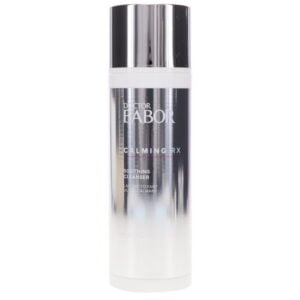 BABOR Calming RX Soothing Cleanser 5.07 oz
×
$40.501 × $40.50
BABOR Calming RX Soothing Cleanser 5.07 oz
×
$40.501 × $40.50 -
 BABOR Calming RX Soothing Cream 1.69 oz
×
$50.991 × $50.99
BABOR Calming RX Soothing Cream 1.69 oz
×
$50.991 × $50.99 -
 BABOR Cleansing Phyto-Active Phytoactive Reactivating 3.38 oz
×
$23.661 × $23.66
BABOR Cleansing Phyto-Active Phytoactive Reactivating 3.38 oz
×
$23.661 × $23.66 -
 BABOR Collagen Concentrate Lift & Firm Ampoule Concentrates 7 Count
×
$27.381 × $27.38
BABOR Collagen Concentrate Lift & Firm Ampoule Concentrates 7 Count
×
$27.381 × $27.38 -
 BABOR DOCTOR BABOR Refine RX Detox Vitamin Cream 1.69 oz
×
$119.001 × $119.00
BABOR DOCTOR BABOR Refine RX Detox Vitamin Cream 1.69 oz
×
$119.001 × $119.00 -
 BABOR Lifting RX Collagen Serum 4 Count
×
$144.501 × $144.50
BABOR Lifting RX Collagen Serum 4 Count
×
$144.501 × $144.50 -
 BABOR Lifting RX Lift Serum 0.34 oz
×
$31.091 × $31.09
BABOR Lifting RX Lift Serum 0.34 oz
×
$31.091 × $31.09 -
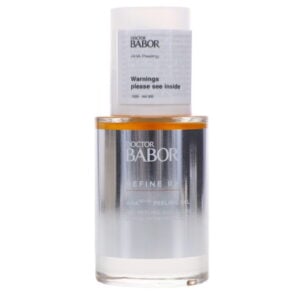 BABOR Refine RX AHA 10+10 Peeling Gel 1.69 oz
×
$123.251 × $123.25
BABOR Refine RX AHA 10+10 Peeling Gel 1.69 oz
×
$123.251 × $123.25 -
 Stila Glitter & Glow Liquid Eye Shadow Diamond Dust 0.153 oz
×
$21.251 × $21.25
Stila Glitter & Glow Liquid Eye Shadow Diamond Dust 0.153 oz
×
$21.251 × $21.25 -
 Stila Glitter & Glow Liquid Eye Shadow Dollish 0.153 oz
×
$21.251 × $21.25
Stila Glitter & Glow Liquid Eye Shadow Dollish 0.153 oz
×
$21.251 × $21.25 -
 Stila Glitter & Glow Liquid Eye Shadow Perlina 0.153 oz
×
$21.251 × $21.25
Stila Glitter & Glow Liquid Eye Shadow Perlina 0.153 oz
×
$21.251 × $21.25 -
 Stila Glitter & Glow Liquid Eye Shadow Rose Gold Retro 0.153 oz
×
$21.251 × $21.25
Stila Glitter & Glow Liquid Eye Shadow Rose Gold Retro 0.153 oz
×
$21.251 × $21.25 -
 Stila Glitter & Glow Liquid Eye Shadow Smoldering Satin 0.153 oz
×
$21.251 × $21.25
Stila Glitter & Glow Liquid Eye Shadow Smoldering Satin 0.153 oz
×
$21.251 × $21.25 -
 Stila Glitter & Glow Liquid Eye Shadow Wanderlust 0.153 oz
×
$21.251 × $21.25
Stila Glitter & Glow Liquid Eye Shadow Wanderlust 0.153 oz
×
$21.251 × $21.25 -
 Stila Heaven's Dew All Over Glimmer Copper Lake 0.35 oz
×
$25.501 × $25.50
Stila Heaven's Dew All Over Glimmer Copper Lake 0.35 oz
×
$25.501 × $25.50 -
 Stila Heaven's Dew All Over Glimmer Lake Havasu 0.35 oz
×
$25.501 × $25.50
Stila Heaven's Dew All Over Glimmer Lake Havasu 0.35 oz
×
$25.501 × $25.50 -
 Stila One Step Correct 1 oz
×
$30.601 × $30.60
Stila One Step Correct 1 oz
×
$30.601 × $30.60 -
 Stila One Step Correct Kitten 1 oz
×
$30.601 × $30.60
Stila One Step Correct Kitten 1 oz
×
$30.601 × $30.60 -
 Stila Stay All Day Liquid Lipstick Palermo 0.1 oz
×
$20.401 × $20.40
Stila Stay All Day Liquid Lipstick Palermo 0.1 oz
×
$20.401 × $20.40 -
 Stila Stay All Day Liquid Lipstick Perla 0.1 oz
×
$20.401 × $20.40
Stila Stay All Day Liquid Lipstick Perla 0.1 oz
×
$20.401 × $20.40 -
 Stila Stay All Day Liquid Lipstick Promessa 0.1 oz
×
$20.401 × $20.40
Stila Stay All Day Liquid Lipstick Promessa 0.1 oz
×
$20.401 × $20.40 -
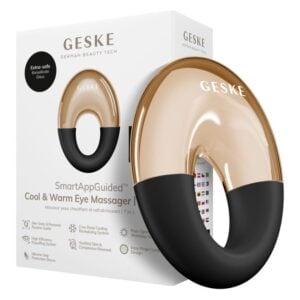 GESKE Cool & Warm Duo Eye Massager 7 in 1 Gray
×
$29.951 × $29.95
GESKE Cool & Warm Duo Eye Massager 7 in 1 Gray
×
$29.951 × $29.95 -
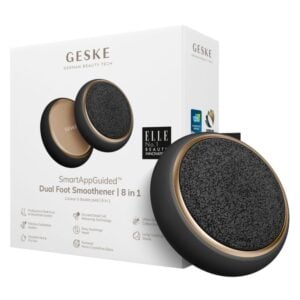 GESKE Dual Foot Smoothener 8 in 1 Gray
×
$29.951 × $29.95
GESKE Dual Foot Smoothener 8 in 1 Gray
×
$29.951 × $29.95 -
 GESKE Facial Hydration Refresher 4 in 1 Starlight
×
$29.951 × $29.95
GESKE Facial Hydration Refresher 4 in 1 Starlight
×
$29.951 × $29.95 -
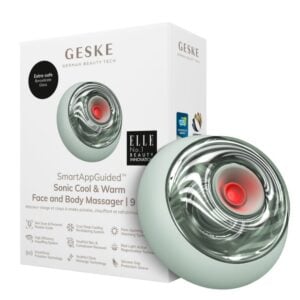 GESKE Sonic Cool & Warm Face and Body Massager 9 in 1 Green
×
$39.951 × $39.95
GESKE Sonic Cool & Warm Face and Body Massager 9 in 1 Green
×
$39.951 × $39.95 -
 GESKE Sonic Facial Roller 4 in 1 Gray
×
$39.951 × $39.95
GESKE Sonic Facial Roller 4 in 1 Gray
×
$39.951 × $39.95 -
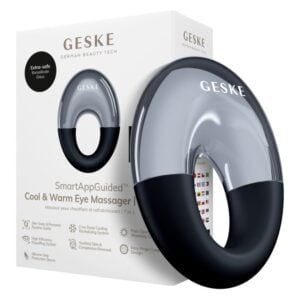 GESKE Warm & Cool Eye Energizer 6 in 1 Black
×
$59.951 × $59.95
GESKE Warm & Cool Eye Energizer 6 in 1 Black
×
$59.951 × $59.95 -
 Joico Blonde Life Violet Conditioner 8.5 oz
×
$14.971 × $14.97
Joico Blonde Life Violet Conditioner 8.5 oz
×
$14.971 × $14.97 -
 Joico Defy Damage Protective Shampoo 10.1 oz
×
$9.881 × $9.88
Joico Defy Damage Protective Shampoo 10.1 oz
×
$9.881 × $9.88 -
 Joico K-Pak Intense Hydrator Treatment 8.5 oz
×
$26.071 × $26.07
Joico K-Pak Intense Hydrator Treatment 8.5 oz
×
$26.071 × $26.07 -
 Joico K-PAK Shampoo to Repair Damage 10.1 oz
×
$15.481 × $15.48
Joico K-PAK Shampoo to Repair Damage 10.1 oz
×
$15.481 × $15.48 -
 Joico Vero K-Pak Color Volume Veroxide Creme Developer (9%) 32 oz
×
$17.101 × $17.10
Joico Vero K-Pak Color Volume Veroxide Creme Developer (9%) 32 oz
×
$17.101 × $17.10 -
 Living Proof Full Conditioner 8 oz 2 Pack
×
$40.121 × $40.12
Living Proof Full Conditioner 8 oz 2 Pack
×
$40.121 × $40.12 -
 Living Proof Full Texturizing Foam 5 oz
×
$19.841 × $19.84
Living Proof Full Texturizing Foam 5 oz
×
$19.841 × $19.84 -
 Living Proof No Frizz Shampoo 2 oz & No Frizz Conditioner 2 oz Combo Pack
×
$16.941 × $16.94
Living Proof No Frizz Shampoo 2 oz & No Frizz Conditioner 2 oz Combo Pack
×
$16.941 × $16.94 -
 Living Proof No Frizz Smooth Styling Cream 8 oz
×
$19.931 × $19.93
Living Proof No Frizz Smooth Styling Cream 8 oz
×
$19.931 × $19.93 -
 Living Proof No Frizz Vanishing Oil 1.7 oz
×
$22.881 × $22.88
Living Proof No Frizz Vanishing Oil 1.7 oz
×
$22.881 × $22.88 -
 Olaplex 4-in-1 Moisture Mask 12.55 oz
×
$42.561 × $42.56
Olaplex 4-in-1 Moisture Mask 12.55 oz
×
$42.561 × $42.56 -
 Olaplex Broad Spectrum Chelating Treatment 12.55 oz
×
$36.991 × $36.99
Olaplex Broad Spectrum Chelating Treatment 12.55 oz
×
$36.991 × $36.99 -
 Olaplex In Good Repair Kit
×
$40.491 × $40.49
Olaplex In Good Repair Kit
×
$40.491 × $40.49 -
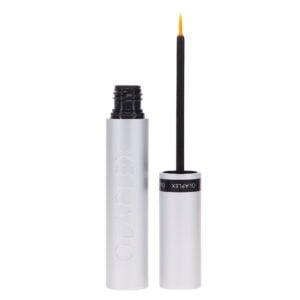 Olaplex Lashbond Building Serum 0.15 oz
×
$33.671 × $33.67
Olaplex Lashbond Building Serum 0.15 oz
×
$33.671 × $33.67 -
 Olaplex No. 0.5 Scalp Longevity Treatment 1.7 oz
×
$37.401 × $37.40
Olaplex No. 0.5 Scalp Longevity Treatment 1.7 oz
×
$37.401 × $37.40 -
 Olaplex No. 5 Leave-In Moisturize & Mend Leave-In Conditioner Combo Pack
×
$26.501 × $26.50
Olaplex No. 5 Leave-In Moisturize & Mend Leave-In Conditioner Combo Pack
×
$26.501 × $26.50 -
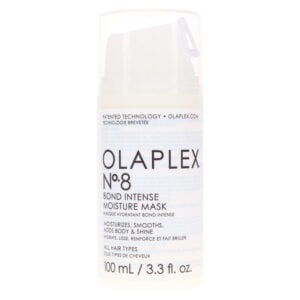 Olaplex No. 8 Bond Intense Mask 3.3 oz
×
$27.501 × $27.50
Olaplex No. 8 Bond Intense Mask 3.3 oz
×
$27.501 × $27.50 -
 Olaplex No. 8 Bond Intense Mask 3.3 oz
×
$22.191 × $22.19
Olaplex No. 8 Bond Intense Mask 3.3 oz
×
$22.191 × $22.19 -
 Olaplex No.0 Intensive Bond Building Treatment with Trigger 5.2 oz
×
$20.401 × $20.40
Olaplex No.0 Intensive Bond Building Treatment with Trigger 5.2 oz
×
$20.401 × $20.40 -
 Paul Mitchell CC Color Protect Daily Conditioner 33.8 oz
×
$27.201 × $27.20
Paul Mitchell CC Color Protect Daily Conditioner 33.8 oz
×
$27.201 × $27.20 -
 Paul Mitchell Clean Beauty Anti-Frizz Conditioner 8.5 oz
×
$28.501 × $28.50
Paul Mitchell Clean Beauty Anti-Frizz Conditioner 8.5 oz
×
$28.501 × $28.50 -
 Paul Mitchell Clean Beauty Anti-Frizz Leave-In Treatment 5.1 oz
×
$23.601 × $23.60
Paul Mitchell Clean Beauty Anti-Frizz Leave-In Treatment 5.1 oz
×
$23.601 × $23.60 -
 Paul Mitchell Clean Beauty Anti-Frizz Shampoo 8.5 oz
×
$28.001 × $28.00
Paul Mitchell Clean Beauty Anti-Frizz Shampoo 8.5 oz
×
$28.001 × $28.00 -
 Paul Mitchell Clean Beauty Everyday Leave-In Treatment 5.1 oz
×
$23.601 × $23.60
Paul Mitchell Clean Beauty Everyday Leave-In Treatment 5.1 oz
×
$23.601 × $23.60 -
 Paul Mitchell Clean Beauty Heat Styling Spray 5.1 oz
×
$13.691 × $13.69
Paul Mitchell Clean Beauty Heat Styling Spray 5.1 oz
×
$13.691 × $13.69 -
 Paul Mitchell Clean Beauty Hydrate Shampoo 8.5 oz & Clean Beauty Hydrate Conditioner 8.5 oz Combo Pack
×
$46.801 × $46.80
Paul Mitchell Clean Beauty Hydrate Shampoo 8.5 oz & Clean Beauty Hydrate Conditioner 8.5 oz Combo Pack
×
$46.801 × $46.80 -
 Paul Mitchell Clean Beauty Repair Leave-In Treatment 5.1 oz
×
$29.501 × $29.50
Paul Mitchell Clean Beauty Repair Leave-In Treatment 5.1 oz
×
$29.501 × $29.50 -
 Peter Thomas Roth Cucumber De Tox Hydra Gel Eye Patches 60 pcs
×
$24.001 × $24.00
Peter Thomas Roth Cucumber De Tox Hydra Gel Eye Patches 60 pcs
×
$24.001 × $24.00 -
 Peter Thomas Roth Cucumber Gel Masque 5 oz
×
$29.701 × $29.70
Peter Thomas Roth Cucumber Gel Masque 5 oz
×
$29.701 × $29.70 -
 Peter Thomas Roth Cucumber Gel Masque 5 oz 2 Pack
×
$53.601 × $53.60
Peter Thomas Roth Cucumber Gel Masque 5 oz 2 Pack
×
$53.601 × $53.60 -
 Peter Thomas Roth FIRMx Collagen Face & Eye Hydra-Gel Patches 90 ct
×
$37.031 × $37.03
Peter Thomas Roth FIRMx Collagen Face & Eye Hydra-Gel Patches 90 ct
×
$37.031 × $37.03 -
 Peter Thomas Roth Full-Size FIRMx Face Peeling Gel & Instant Firmx Eye 2 Piece Kit
×
$37.461 × $37.46
Peter Thomas Roth Full-Size FIRMx Face Peeling Gel & Instant Firmx Eye 2 Piece Kit
×
$37.461 × $37.46 -
 Peter Thomas Roth Instant FIRMx Glow-Filter Priming Serum 1 oz
×
$28.561 × $28.56
Peter Thomas Roth Instant FIRMx Glow-Filter Priming Serum 1 oz
×
$28.561 × $28.56 -
 Peter Thomas Roth Max Complexion Correction Pads 60 pc
×
$30.721 × $30.72
Peter Thomas Roth Max Complexion Correction Pads 60 pc
×
$30.721 × $30.72 -
 Peter Thomas Roth Mega Rich Shampoo 8 oz
×
$14.251 × $14.25
Peter Thomas Roth Mega Rich Shampoo 8 oz
×
$14.251 × $14.25 -
 Peter Thomas Roth Peptide Skinjection Moisture Infusion Cream 1.7 oz
×
$37.951 × $37.95
Peter Thomas Roth Peptide Skinjection Moisture Infusion Cream 1.7 oz
×
$37.951 × $37.95 -
 Peter Thomas Roth Peptide Skinjection Moisture Infusion Cream Refillable Pod 1.7 oz
×
$44.201 × $44.20
Peter Thomas Roth Peptide Skinjection Moisture Infusion Cream Refillable Pod 1.7 oz
×
$44.201 × $44.20 -
 Peter Thomas Roth Peptide Skinjection Peel Pads 60 pc
×
$33.121 × $33.12
Peter Thomas Roth Peptide Skinjection Peel Pads 60 pc
×
$33.121 × $33.12 -
 Peter Thomas Roth Peptide Skinjection Wrinkle Fix Serum 1 oz
×
$44.851 × $44.85
Peter Thomas Roth Peptide Skinjection Wrinkle Fix Serum 1 oz
×
$44.851 × $44.85 -
 Peter Thomas Roth Peptide Skinjection Wrinkle Fix Serum Refillable Pod 1 oz
×
$48.791 × $48.79
Peter Thomas Roth Peptide Skinjection Wrinkle Fix Serum Refillable Pod 1 oz
×
$48.791 × $48.79 -
 PCA Skin Facial Wash 7 oz
×
$26.451 × $26.45
PCA Skin Facial Wash 7 oz
×
$26.451 × $26.45 -
 PCA Skin Blemish Control Bar pHaze 32 3.2 oz
×
$28.701 × $28.70
PCA Skin Blemish Control Bar pHaze 32 3.2 oz
×
$28.701 × $28.70 -
 PCA Skin ClearSkin 1.7 oz
×
$33.061 × $33.06
PCA Skin ClearSkin 1.7 oz
×
$33.061 × $33.06 -
 PCA Skin Creamy pHaze 41 Cleanser 7 oz
×
$29.161 × $29.16
PCA Skin Creamy pHaze 41 Cleanser 7 oz
×
$29.161 × $29.16 -
 PCA Skin Daily Exfoliant 7 oz
×
$29.891 × $29.89
PCA Skin Daily Exfoliant 7 oz
×
$29.891 × $29.89 -
 PCA Skin Detoxifying Mask 2.1 oz
×
$49.681 × $49.68
PCA Skin Detoxifying Mask 2.1 oz
×
$49.681 × $49.68 -
 PCA Skin Facial Wash Oily Problem 7 oz
×
$24.311 × $24.31
PCA Skin Facial Wash Oily Problem 7 oz
×
$24.311 × $24.31 -
 PCA Skin Hyaluronic Acid Hydrating Lip Booster 0.24 oz
×
$37.981 × $37.98
PCA Skin Hyaluronic Acid Hydrating Lip Booster 0.24 oz
×
$37.981 × $37.98 -
 PCA Skin Hydrate Therapeudic Oat Milk Mask 4.1 oz
×
$54.421 × $54.42
PCA Skin Hydrate Therapeudic Oat Milk Mask 4.1 oz
×
$54.421 × $54.42 -
 PCA Skin Hydrating Facial Toner 7 oz
×
$35.291 × $35.29
PCA Skin Hydrating Facial Toner 7 oz
×
$35.291 × $35.29 -
 PCA Skin Hydrating Mask 2.1 oz
×
$51.401 × $51.40
PCA Skin Hydrating Mask 2.1 oz
×
$51.401 × $51.40 -
 PCA Skin Hydrating Serum 1 oz
×
$60.541 × $60.54
PCA Skin Hydrating Serum 1 oz
×
$60.541 × $60.54 -
 PCA Skin Nutrient pHaze 5 Toner 4.4 oz
×
$35.291 × $35.29
PCA Skin Nutrient pHaze 5 Toner 4.4 oz
×
$35.291 × $35.29 -
 Sexy Hair ArtistryPro Base Coat Conditioner 9.4 oz
×
$23.801 × $23.80
Sexy Hair ArtistryPro Base Coat Conditioner 9.4 oz
×
$23.801 × $23.80 -
 Sexy Hair ArtistryPro Clean Palette Shampoo 9.4 oz
×
$23.801 × $23.80
Sexy Hair ArtistryPro Clean Palette Shampoo 9.4 oz
×
$23.801 × $23.80 -
 Sexy Hair ArtistryPro Cutting Edge Lightweight Priming Conditioner 8.5 oz
×
$21.251 × $21.25
Sexy Hair ArtistryPro Cutting Edge Lightweight Priming Conditioner 8.5 oz
×
$21.251 × $21.25 -
 Sexy Hair ArtistryPro Hand Crafted Blow Dry Protection Serum 3.4 oz
×
$18.741 × $18.74
Sexy Hair ArtistryPro Hand Crafted Blow Dry Protection Serum 3.4 oz
×
$18.741 × $18.74 -
 Sexy Hair ArtistryPro Sculpted Gel 5 oz
×
$18.701 × $18.70
Sexy Hair ArtistryPro Sculpted Gel 5 oz
×
$18.701 × $18.70 -
 Sexy Hair Big Sexy Hair Big Altitude 6.8 oz
×
$17.081 × $17.08
Sexy Hair Big Sexy Hair Big Altitude 6.8 oz
×
$17.081 × $17.08 -
 Sexy Hair Big Sexy Hair Powder Play Lite Soft Volumizing & Texturizing Powder 0.4 oz
×
$11.851 × $11.85
Sexy Hair Big Sexy Hair Powder Play Lite Soft Volumizing & Texturizing Powder 0.4 oz
×
$11.851 × $11.85 -
 Sexy Hair Big Sexy Hair Powder Play Volumizing and Texturizing Powder 0.53 oz
×
$13.411 × $13.41
Sexy Hair Big Sexy Hair Powder Play Volumizing and Texturizing Powder 0.53 oz
×
$13.411 × $13.41 -
 Sexy Hair Big Sexy Hair Spray and Play Harder Firm Volumizing Hairspray 10 oz
×
$14.451 × $14.45
Sexy Hair Big Sexy Hair Spray and Play Harder Firm Volumizing Hairspray 10 oz
×
$14.451 × $14.45 -
 Sexy Hair Big Sexy Hair Spray and Play Harder Firm Volumizing Hairspray 10 oz 3 Pack
×
$29.601 × $29.60
Sexy Hair Big Sexy Hair Spray and Play Harder Firm Volumizing Hairspray 10 oz 3 Pack
×
$29.601 × $29.60 -
 Surface Enzyme Cream Activator 30 Volume 33.8 oz
×
$16.551 × $16.55
Surface Enzyme Cream Activator 30 Volume 33.8 oz
×
$16.551 × $16.55 -
 Surface Enzyme Cream Activator 7 Volume 33.8 oz
×
$14.841 × $14.84
Surface Enzyme Cream Activator 7 Volume 33.8 oz
×
$14.841 × $14.84 -
 Surface Pure Color 7B Denim 2 oz
×
$7.491 × $7.49
Surface Pure Color 7B Denim 2 oz
×
$7.491 × $7.49 -
 Surface Pure Color 7C Spice 2 oz
×
$7.491 × $7.49
Surface Pure Color 7C Spice 2 oz
×
$7.491 × $7.49 -
 Surface Pure Color 9C Copper 2 oz
×
$7.491 × $7.49
Surface Pure Color 9C Copper 2 oz
×
$7.491 × $7.49 -
 Surface Pure Color 9NB Butter 2 oz
×
$7.491 × $7.49
Surface Pure Color 9NB Butter 2 oz
×
$7.491 × $7.49 -
 UNITE 7 Seconds Detangler Leave in Conditioner 8 oz 2 Pack
×
$45.361 × $45.36
UNITE 7 Seconds Detangler Leave in Conditioner 8 oz 2 Pack
×
$45.361 × $45.36 -
 UNITE Hair 7 Seconds Condition Leave in Detangler 2 oz 2 Pack
×
$19.371 × $19.37
UNITE Hair 7 Seconds Condition Leave in Detangler 2 oz 2 Pack
×
$19.371 × $19.37 -
 UNITE Hair 7 Seconds Detangler Leave in Conditioner 2 oz
×
$10.801 × $10.80
UNITE Hair 7 Seconds Detangler Leave in Conditioner 2 oz
×
$10.801 × $10.80 -
 UNITE Hair 7 Seconds Glossing Dry Thermal Shine 6 oz
×
$26.831 × $26.83
UNITE Hair 7 Seconds Glossing Dry Thermal Shine 6 oz
×
$26.831 × $26.83 -
 UNITE Hair 7 Seconds Mask 4 oz
×
$29.871 × $29.87
UNITE Hair 7 Seconds Mask 4 oz
×
$29.871 × $29.87 -
 UNITE Hair Beach Day Texturizing 8 oz
×
$22.061 × $22.06
UNITE Hair Beach Day Texturizing 8 oz
×
$22.061 × $22.06 -
 UNITE Hair Blonda Oil 4.23 oz
×
$30.611 × $30.61
UNITE Hair Blonda Oil 4.23 oz
×
$30.611 × $30.61 -
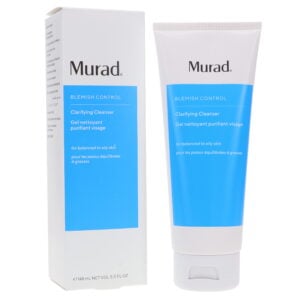 Murad Acne Control Clarifying Cleanser 5 oz
×
$24.651 × $24.65
Murad Acne Control Clarifying Cleanser 5 oz
×
$24.651 × $24.65 -
 Aveda Nutriplenish Leave-In Conditioner 6.7 oz
×
$47.001 × $47.00
Aveda Nutriplenish Leave-In Conditioner 6.7 oz
×
$47.001 × $47.00 -
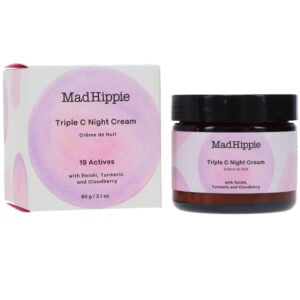 Mad Hippie Triple C Night Cream 2.1 oz
×
$28.891 × $28.89
Mad Hippie Triple C Night Cream 2.1 oz
×
$28.891 × $28.89 -
 Mad Hippie Microdermabrasion Facial 2.1 oz
×
$28.041 × $28.04
Mad Hippie Microdermabrasion Facial 2.1 oz
×
$28.041 × $28.04 -
 Shu Uemura Extreme Reset Extreme Repair Treatment Very Damaged Hair 6 oz
×
$62.051 × $62.05
Shu Uemura Extreme Reset Extreme Repair Treatment Very Damaged Hair 6 oz
×
$62.051 × $62.05 -
 Shu Uemura Extreme Reset Extreme Repair Overnight Serum Very Damaged Hair 3.04 oz
×
$59.501 × $59.50
Shu Uemura Extreme Reset Extreme Repair Overnight Serum Very Damaged Hair 3.04 oz
×
$59.501 × $59.50 -
 Shu Uemura Essence Absolue Nourishing Protective Hair Oil 5 oz
×
$61.201 × $61.20
Shu Uemura Essence Absolue Nourishing Protective Hair Oil 5 oz
×
$61.201 × $61.20 -
 Mario Badescu Glycolic Foaming Cleanser 6 oz
×
$13.601 × $13.60
Mario Badescu Glycolic Foaming Cleanser 6 oz
×
$13.601 × $13.60 -
 Mario Badescu Anti Acne Serum 1 oz
×
$17.001 × $17.00
Mario Badescu Anti Acne Serum 1 oz
×
$17.001 × $17.00 -
 Mario Badescu Seaweed Night Cream 1 oz
×
$18.701 × $18.70
Mario Badescu Seaweed Night Cream 1 oz
×
$18.701 × $18.70 -
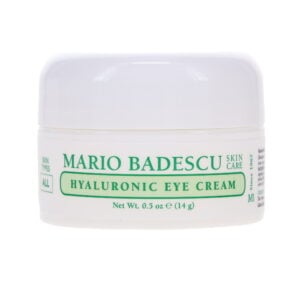 Mario Badescu Hyaluronic Eye Cream 0.5 oz
×
$17.001 × $17.00
Mario Badescu Hyaluronic Eye Cream 0.5 oz
×
$17.001 × $17.00 -
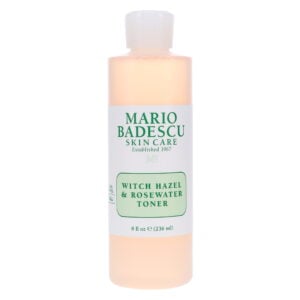 Mario Badescu Witch Hazel & Rosewater Toner 8 oz
×
$12.751 × $12.75
Mario Badescu Witch Hazel & Rosewater Toner 8 oz
×
$12.751 × $12.75 -
 Mario Badescu Hyaluronic Dew Cream 1.5 oz
×
$22.101 × $22.10
Mario Badescu Hyaluronic Dew Cream 1.5 oz
×
$22.101 × $22.10 -
 Mad Hippie Hydrating Facial SPF 25+ UVA/UVB 2 oz
×
$21.241 × $21.24
Mad Hippie Hydrating Facial SPF 25+ UVA/UVB 2 oz
×
$21.241 × $21.24 -
 Mad Hippie Jelly Cleanser 4 oz
×
$15.291 × $15.29
Mad Hippie Jelly Cleanser 4 oz
×
$15.291 × $15.29 -
 L'ANZA Healing Strength Neem Plant Silk Serum 3.4 oz
×
$39.951 × $39.95
L'ANZA Healing Strength Neem Plant Silk Serum 3.4 oz
×
$39.951 × $39.95 -
 Sol de Janeiro Brazilian Joia Strengthening + Smoothing Shampoo 3 oz & Brazilian Joia Strengthening + Smoothing Conditioner 3 oz Combo Pack
×
$20.401 × $20.40
Sol de Janeiro Brazilian Joia Strengthening + Smoothing Shampoo 3 oz & Brazilian Joia Strengthening + Smoothing Conditioner 3 oz Combo Pack
×
$20.401 × $20.40 -
 Sol de Janeiro Rio Radiance SPF 50 Body Lotion Cheirosa 87 Fragrance 6.7 oz
×
$19.991 × $19.99
Sol de Janeiro Rio Radiance SPF 50 Body Lotion Cheirosa 87 Fragrance 6.7 oz
×
$19.991 × $19.99 -
 Aveda Invati Ultra Advaced Fortifying Leave-In Treatment 3.4 oz
×
$40.421 × $40.42
Aveda Invati Ultra Advaced Fortifying Leave-In Treatment 3.4 oz
×
$40.421 × $40.42 -
 Aveda Botanical Repair Bond-Building Styling Creme 5 oz
×
$38.001 × $38.00
Aveda Botanical Repair Bond-Building Styling Creme 5 oz
×
$38.001 × $38.00 -
 Aveda Invati Ultra Advanced Revitalizing Scalp Serum 5 oz
×
$57.601 × $57.60
Aveda Invati Ultra Advanced Revitalizing Scalp Serum 5 oz
×
$57.601 × $57.60 -
 Aveda Be Curly Advanced Curl Perfecting Primer 6.7 oz
×
$41.001 × $41.00
Aveda Be Curly Advanced Curl Perfecting Primer 6.7 oz
×
$41.001 × $41.00 -
 Aveda Invati Ultra Advanced Thickening Conditioner Rich 6.7 oz
×
$38.541 × $38.54
Aveda Invati Ultra Advanced Thickening Conditioner Rich 6.7 oz
×
$38.541 × $38.54 -
 Aveda Color Control Leave-In Treatment Light 5 oz
×
$36.001 × $36.00
Aveda Color Control Leave-In Treatment Light 5 oz
×
$36.001 × $36.00 -
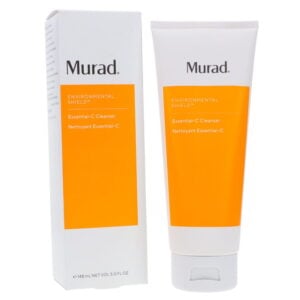 Murad Environmental Shield Essential-C Cleanser 5 oz
×
$30.601 × $30.60
Murad Environmental Shield Essential-C Cleanser 5 oz
×
$30.601 × $30.60 -
 Murad Resurgence Retinol Youth Renewal Oil Drops 1 oz
×
$61.201 × $61.20
Murad Resurgence Retinol Youth Renewal Oil Drops 1 oz
×
$61.201 × $61.20 -
 LANEIGE Lip Sleeping Mask Berry 0.7 oz
×
$20.401 × $20.40
LANEIGE Lip Sleeping Mask Berry 0.7 oz
×
$20.401 × $20.40 -
 Alfaparf Milano Semi Di Lino Reconstruction Reparative Lotion 0.44 oz 6 Pack
×
$23.801 × $23.80
Alfaparf Milano Semi Di Lino Reconstruction Reparative Lotion 0.44 oz 6 Pack
×
$23.801 × $23.80 -
 Alfaparf Milano Semi Di Lino Sublime Cristalli Liquidi The Original 1.69 oz
×
$42.501 × $42.50
Alfaparf Milano Semi Di Lino Sublime Cristalli Liquidi The Original 1.69 oz
×
$42.501 × $42.50 -
 Alfaparf Milano Semi Di Lino Reparative SOS Emergency Oil 0.44 oz 6 Pack
×
$23.801 × $23.80
Alfaparf Milano Semi Di Lino Reparative SOS Emergency Oil 0.44 oz 6 Pack
×
$23.801 × $23.80 -
 Colorescience Barrier Pro Essential Moisturizer 1.7 oz
×
$58.491 × $58.49
Colorescience Barrier Pro Essential Moisturizer 1.7 oz
×
$58.491 × $58.49 -
 L'Occitane Delicious Paste with Crushed Almonds 7.4 oz
×
$37.951 × $37.95
L'Occitane Delicious Paste with Crushed Almonds 7.4 oz
×
$37.951 × $37.95 -
 Dermalogica Ultracalming Mist 6 oz
×
$38.251 × $38.25
Dermalogica Ultracalming Mist 6 oz
×
$38.251 × $38.25 -
 Sol de Janeiro Delicia Drench Jet Set
×
$28.801 × $28.80
Sol de Janeiro Delicia Drench Jet Set
×
$28.801 × $28.80







